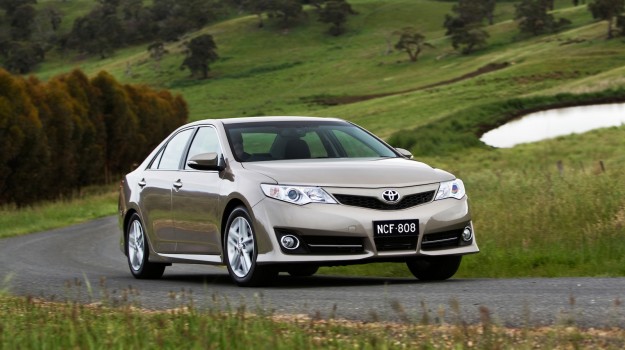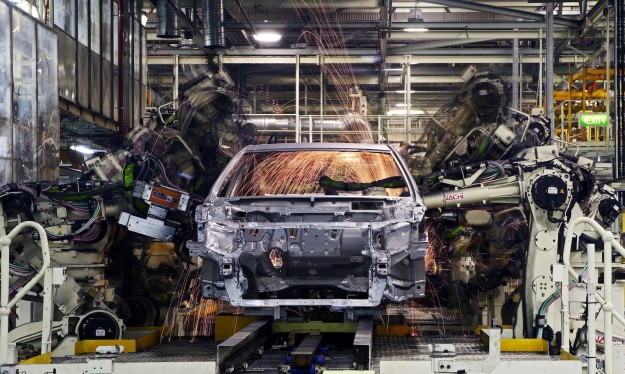Toyota Australia sales and marketing executive director Tony Cramb has revealed that an official decision on whether to close the company’s local manufacturing operations will be made “in the first half of 2014″.
Speaking at the Tokyo motor show, Cramb confirmed that securing the next-generation 2015 Toyota Camry for local production and with a firm export program is the priority, but admitted there are many hurdles facing the operations.
“The next-generation Camry decision gets made in 2014, probably in the first half of 2014,” he began. ”We have to show them [TMC Japan] the plan that they are convinced we can achieve in order to become globally competitive.”
Toyota Australia needs to continue cutting production costs by $3800 per car before mid 2014, something which although it has not achieved so far, Cramb says “we actually have internally great confidence” it can be achieved.

Yet the sales and marketing boss also confessed that if Holden closed its manufacturing operations it would make that target very difficult to achieve.
“If Holden were to leave it would be very difficult [to achieve the $3800 reduction],” he remarked. “I’m not saying it’s impossible, I’m just saying it makes it far more difficult.
“If Holden goes … it would be more difficult for suppliers to do that [reduce costs].
“We can’t control what Holden do, that’s completely outside of our control and it’s not something we’re thinking about. What we’re focused on is what we can do to remain internationally competitive.”
Cramb also said that without an export program to the Middle East the local manufacturing plant in Altona, Victoria, cannot continue building cars, even though Toyota Australia loses money on every Camry it currently exports there.
Other plants around the world that build the Camry more cheaply are also currently pitching their case to build the next-generation Camry from 2015/16.
“There’s other factories around the world that produce Camry that are being considered for this [Middle East export],” Cramb explained.
“It [remaining open] is even more difficult for us if we don’t achieve export. If we can’t get export, then we can’t get the economies of scale for our business, which is all that we can control.
“The other plants will pitch to win the … [Middle East] business.”
Asked whether introducing a third model line in the Altona, Victoria, plant remained a priority, Cramb reiterated “our first priority at the moment is to secure next Camry for export.”

Toyota loses money on every Camry it exports primarily due to the strong Australian dollar, but Cramb insists that the decision to build the next generation Camry locally and export it to the Middle East won’t hinge on exchange rates.
“When I was in the United States in 2003/2004 the dollar was at 53 cents, now it’s … whatever it is, 95. They ebb and flow…
“Toyota doesn’t make business decisions based on the exchange rate this year.
“When the decision gets made by Toyota, they don’t think about it in a short term way, they think about those type of things, they make assumptions based on all of the variables of the business that we’re in.”
Cramb also believes that the company can “absolutely” make a profit on exports again in the future.
Compounding the problems for Toyota Australia is the statement made by the incoming coalition federal government, which has stated plans to heavily reduce the amount of government assistance given to local manufacturers, and will not make any decision on future assistance until a Productivity Commission report is handed down containing recommendations on March 31 – just three months before TMC Japan’s mid-year decision deadline on where the next-generation Camry will be built, and where it will be produced for the Middle East.
All Cramb would say on that matter, however, is “Toyota is talking to the government about the kind of support they would need to build a business that is long-term sustainable, but the context of those discussions are between the government and Toyota”.
Yesterday Toyota global boss Akio Toyoda also told CarAdvice that he requires “sustainable growth” projections in order to keep the local manufacturing operations open. Although Camry and Aurion sales are down 7.6 per cent and 23.8 per cent respectively, Cramb says exports have stabilised – but have not ‘grown’ as Toyoda-san wishes – production with an anticipated 105,000-106,000-unit run expected at Altona this year.





